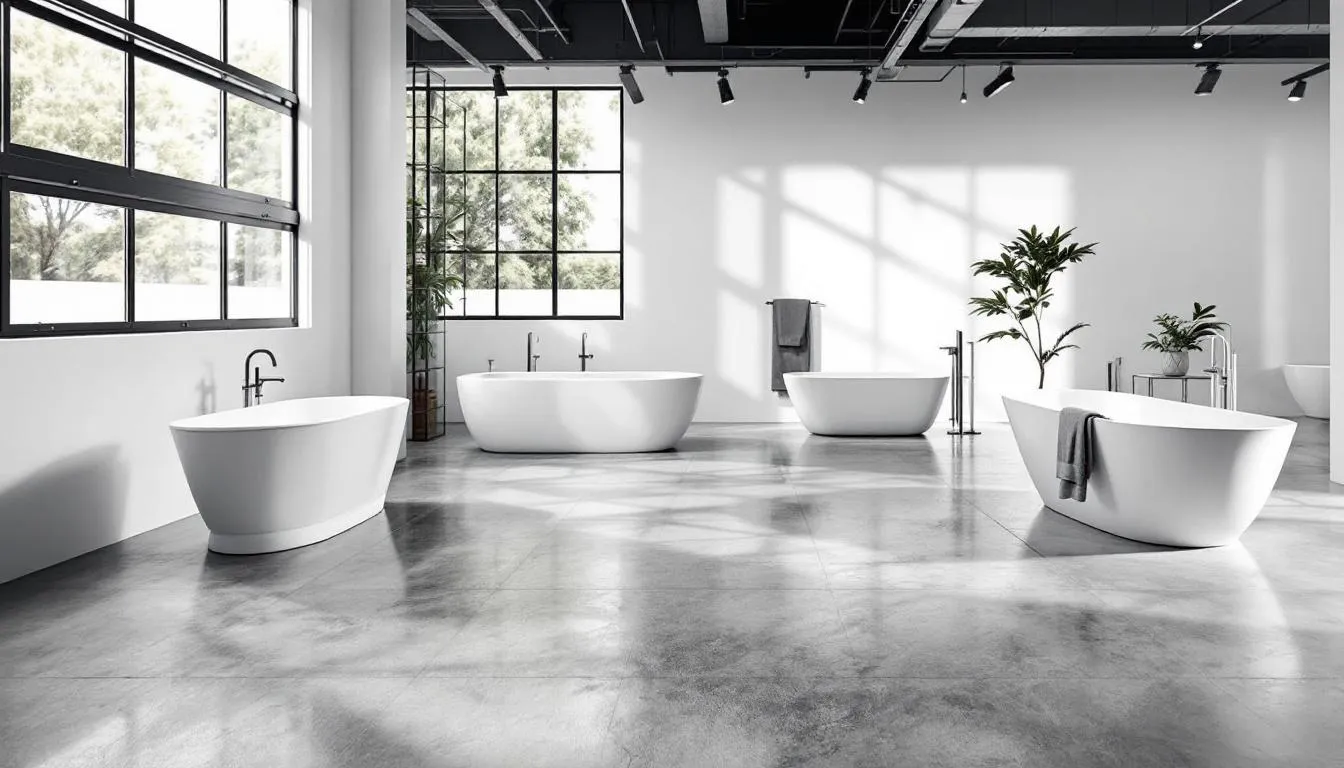Choosing the Perfect Tub Design
The shape of your tub plays a major role in how your bathroom looks, feels and functions. With so many different types of baths available, choosing the right option can transform a simple washroom into a comfortable and stylish retreat.
The right shape can save bathroom floor space, provide maximum comfort and set the tone for the entire design. From compact corner baths to elegant freestanding baths and practical shower baths, understanding how each shape fits your lifestyle and layout makes choosing a new bath much easier.
Why Different Types of Bath Shape Matters
When planning a new bath installation, shape determines:
- How efficiently the bathroom space is used
- How comfortable and relaxing it feels to soak or shower
- The cost of fitting and plumbing
- The aesthetic impact and how it complements your style preference
Homeowners often compare shower baths, freestanding baths and small tubs to get the most out of limited floor space. Since a bath is often a big investment, getting the shape and material right from the start saves time and cost in the long run.
The Most Popular Types of New Baths
1. Rectangular and Straight Baths
Rectangular and straight baths remain the most popular type of tub for both modern and traditional bathroom layouts. Standard sizes range from 1500–1800mm in length and 700–800mm in width, making them practical for many homes.
They are easy to clean and install compared to more complex shapes and cost-effective, with basic models starting around £150. These baths work well in alcoves, against walls or as a double ended bath in larger bathrooms. Many households also pair them with overhead showers or separate shower enclosures for daily use.
Single ended baths place taps and waste at one end, while double ended designs position taps in the centre with sloped ends on both sides. This setup allows for flexible use and shared bathing. Rectangular baths are often chosen for their simple lines, space efficient footprint and compatibility with different materials.
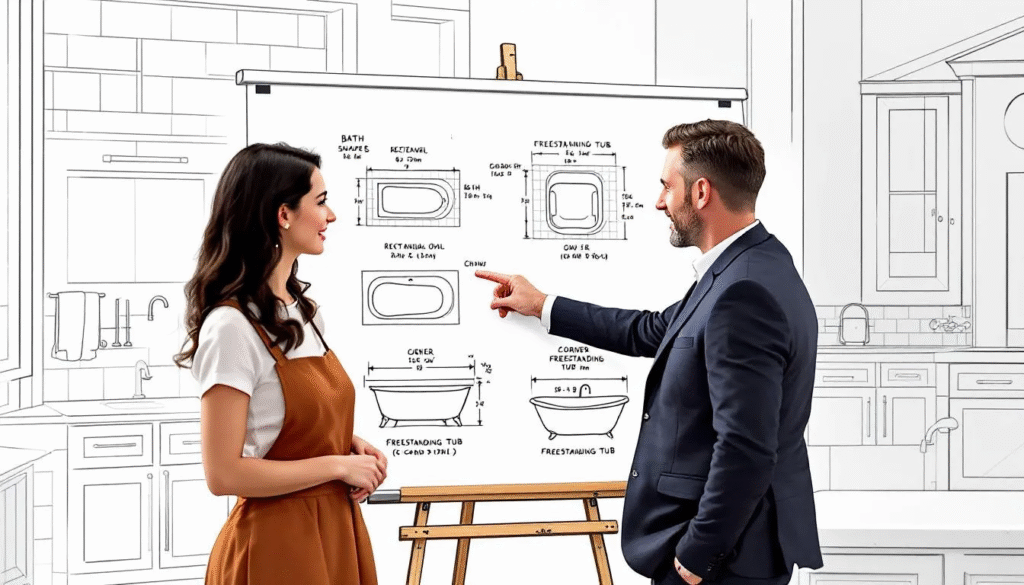
2. Corner Bathtubs
Corner baths are designed to maximise every centimetre of floor area, making them a popular choice in smaller bathrooms and en-suites.
Typical sizes range from 1200mm to 1500mm per side. By fitting neatly into a corner, these small baths free up more space for storage units or a compact shower enclosure. Many corner baths feature a curved front for easier access and built-in seating or armrests for added comfort.
This shape works well in both contemporary and traditional settings. Homeowners often choose corner tubs to create a practical and space efficient layout without sacrificing soaking comfort.
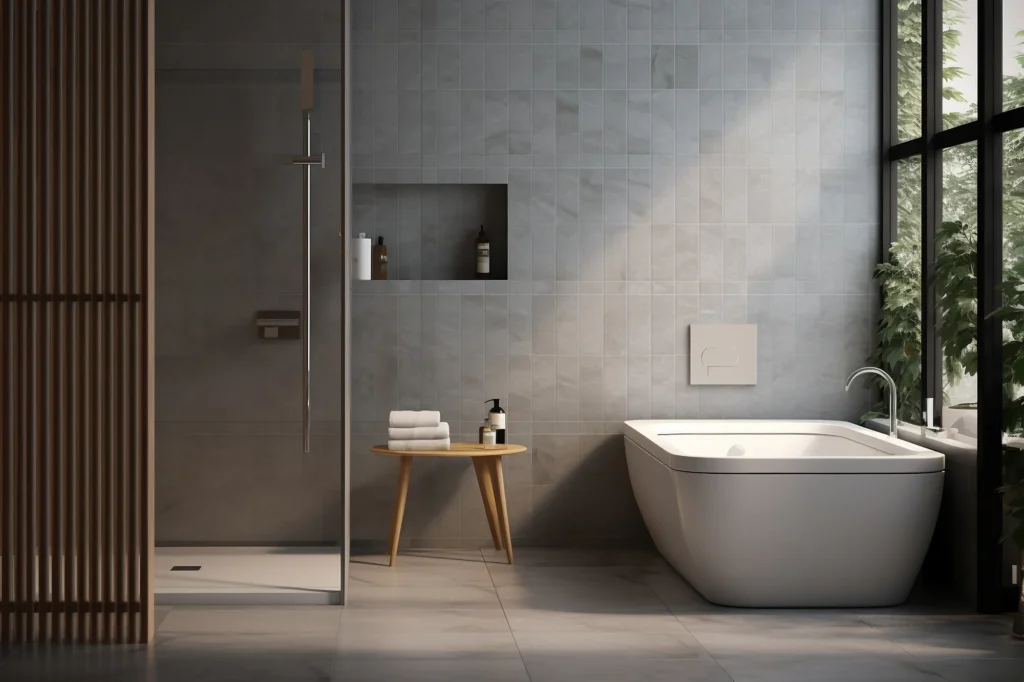
3. Oval and Curved Freestanding Baths
Oval and curved tubs bring a softer, more luxurious look to any bathroom. Freestanding baths are often used as a focal point, creating a spa-like atmosphere.
Freestanding baths in oval shapes typically measure 1600–1900mm and are best placed in large bathrooms where there’s enough clearance for easy access. Their curved sides provide natural ergonomic support, making them ideal for long, relaxing soaks.
These baths are often made from durable material such as stone resin, stone or cast iron. Premium designs have excellent heat retention, helping water stay warmer for longer. Oval baths fit perfectly in modern designs and create a timeless, elegant feel.
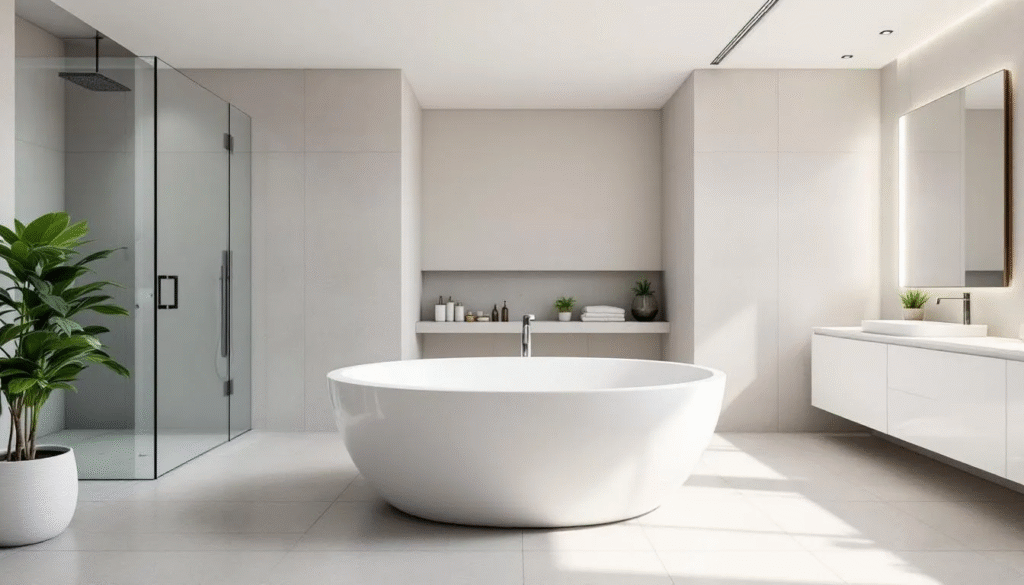
4. L-Shaped and P-Shaped Shower Baths
L- and P-shaped shower baths combine a full bath with the convenience of a shower.
L-shaped tubs feature a squared-off wider end, while P-shaped tubs offer a rounded end for more elbow room. Shower baths are ideal for family bathrooms, smaller properties or medium-sized spaces where separate fixtures might not fit.
This shape allows you to enjoy both a long soak and a quick shower without needing two installations. It’s a smart, space efficient solution that blends practicality with comfort. Many modern shower baths include a fitted glass screen to prevent splashes and keep the room clean.
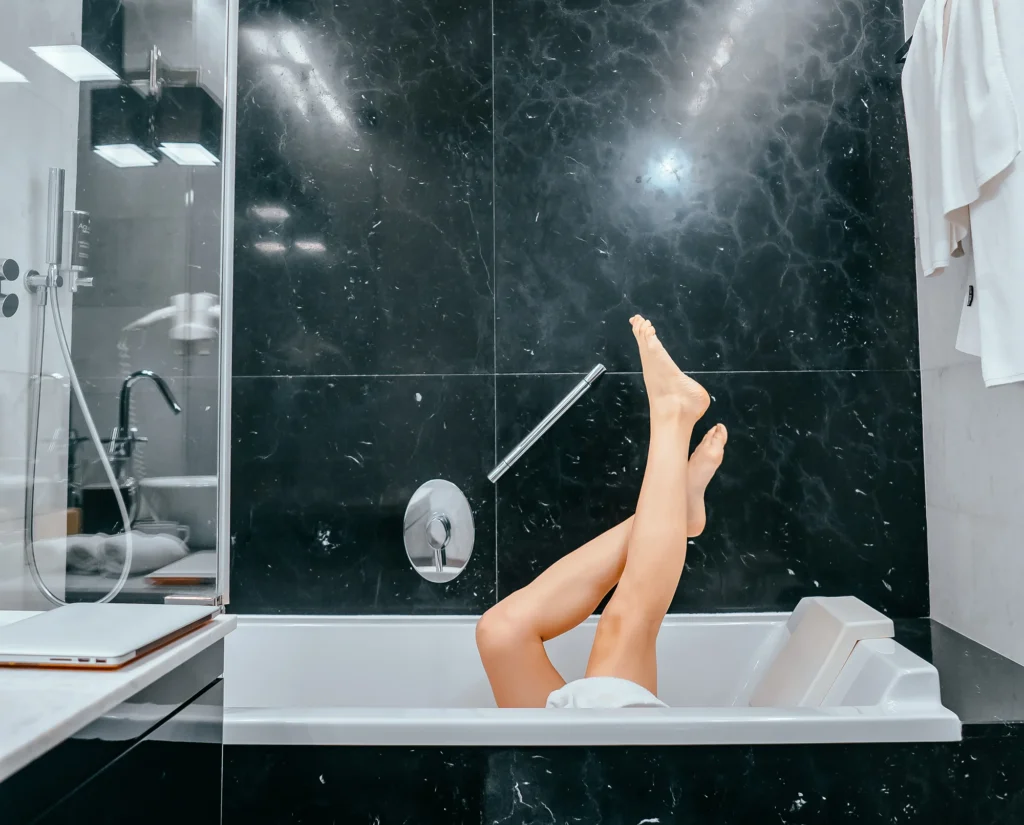
5. Round Baths
Round baths are designed to make a statement. These tubs often serve as the centrepiece of luxury bathrooms, adding symmetry and visual impact.
Typical diameters range from 1400–1800mm. Round freestanding tubs are most commonly installed as freestanding baths in the centre of a room. Many high-end models feature whirlpool jets, providing a spa-like experience similar to a hot tub.
Round baths work best in open layouts where their shape can be fully appreciated. They also pair beautifully with underfloor heating and ambient lighting to create a premium feel.
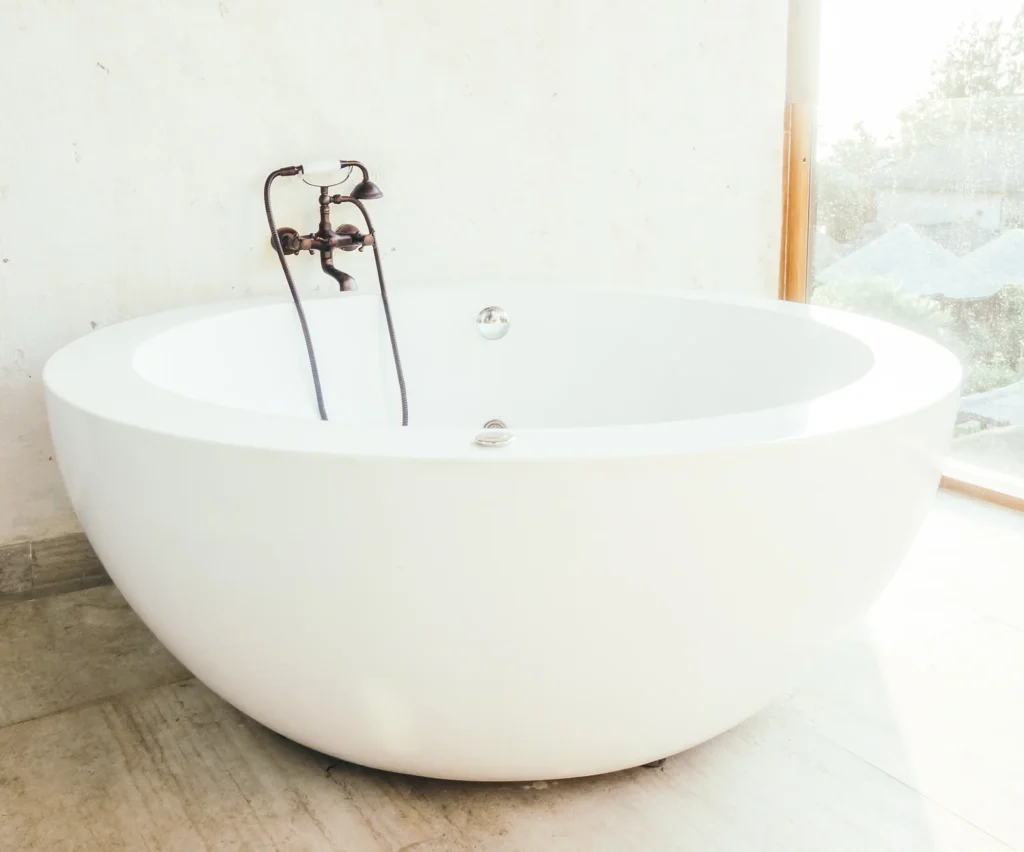
6. Unique and Custom Bath Shapes
For more unusual layouts, different bath designs can be tailored to suit the exact dimensions of the space. Bespoke freestanding options include:
- Asymmetrical tubs for angled walls or tight corners
- Boat or slipper bath designs for a traditional look
- Kidney or hexagonal baths for architectural character
- Custom stone resin tubs to match structural or design features
Although custom designs require more planning and investment, they allow homeowners to create a truly individual bathroom design that reflects their style preference and maximises their floor area.
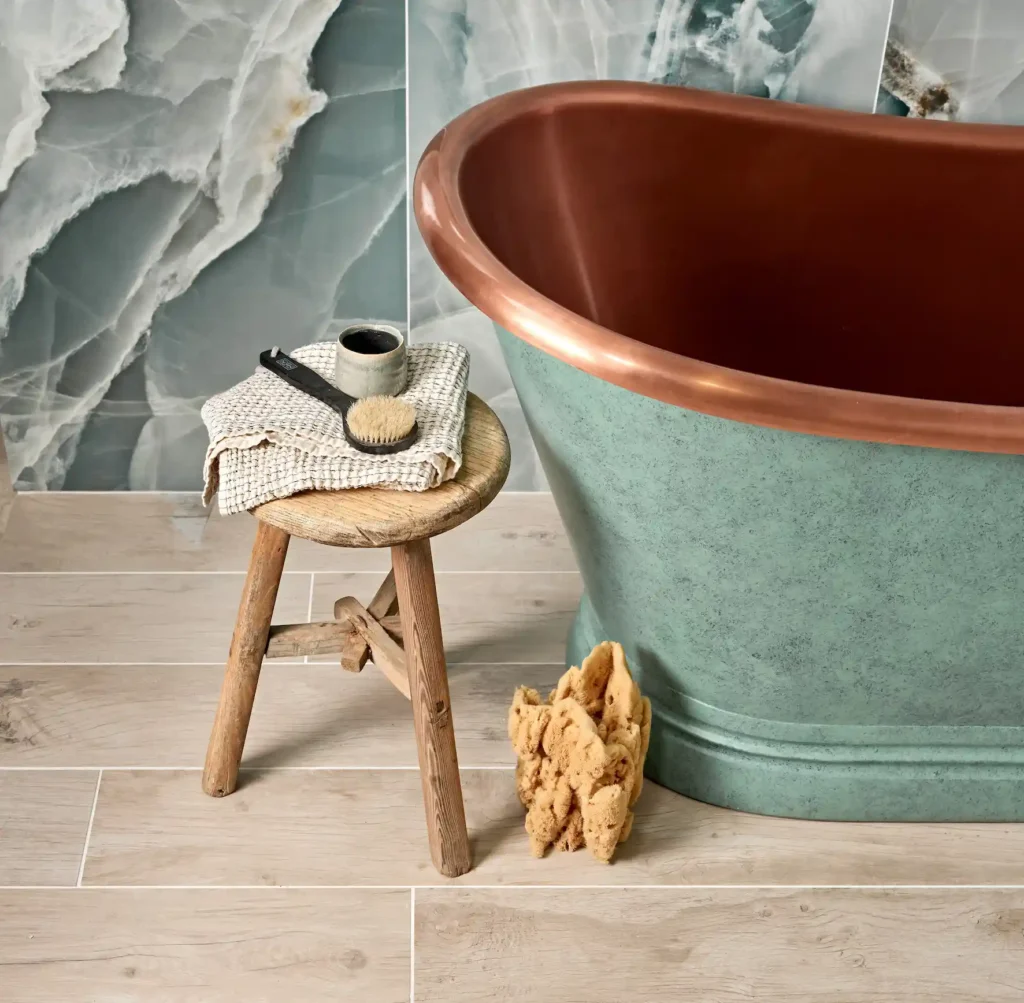
Different Material Choices: Form Meets Function
Shape and material work together to define how a bath feels, performs and lasts. Different materials also affect weight, maintenance, heat retention and cost.
- Acrylic baths are lightweight, affordable and easy to clean compared to heavier options. They suit most family bathrooms and small spaces.
- Steel baths offer a sleek, contemporary look and are made from durable material that heats quickly and lasts for years. They’re often used in modern straight bath designs.
- Cast iron baths are classic and timeless with excellent heat retention. They’re frequently used for slipper bath or freestanding baths that act as a focal point.
- Stone and stone resin baths provide luxury, excellent heat retention and durability, but are lighter than solid stone, making installation more manageable.
- Whirlpool bath options are available in several shapes for a true spa experience at home.
Selecting the right combination of shape and material ensures a bath that looks beautiful, performs well and stands the test of time.
Practical Considerations Before Buying
1. Measuring and Layout
Accurate measurements are essential. Allow at least 700mm of walking space around freestanding baths. Consider the bathroom door, ceiling height and how other fixtures like shower units will fit in.
2. Style and Shape Fit
Rectangular tubs suit traditional spaces, while oval and round freestanding baths suit more modern designs. A corner bath is a smart choice when saving space is a priority.
3. Installation and Plumbing
Freestanding baths, double ended bath styles and stone tubs often need more plumbing work and floor reinforcement than basic acrylic or steel baths.
4. Maintenance and Cleaning
Simple, curved shapes are easier to clean compared to more complex designs. Some materials also resist soap residue better, making long-term care simpler.
5. Budget and Longevity
A basic acrylic rectangular bath is affordable, while premium cast iron, stone resin or steel baths can be more costly. Don’t forget to include accessories such as panels, shower screens and fixtures when planning your budget.
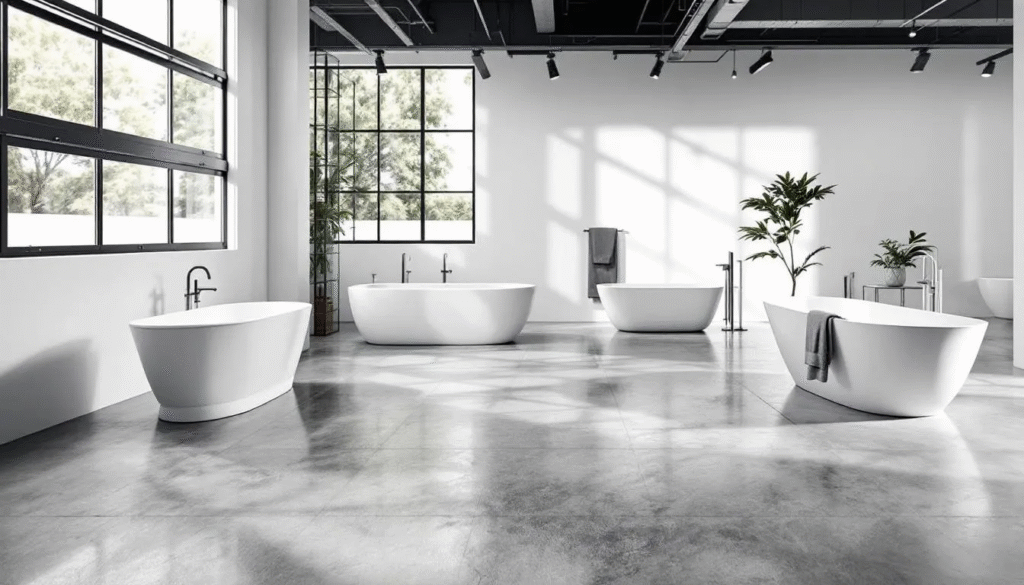
Summary: Choosing the Right Bath Shape
Each shape offers unique advantages:
- Rectangular or straight bath: practical, budget-friendly and easy to install
- Corner baths: excellent for small rooms and maximising space
- Oval and freestanding baths: elegant focal points for larger bathrooms
- L- and P-shaped shower baths: combine two functions in one
- Round baths: dramatic design statements for luxury spaces
- Custom shapes: perfect for unique layouts and modern designs
The best shape depends on your bathroom space, lifestyle and personal taste. With so many different types of baths and materials to choose from, it’s worth taking time to compare before making a big investment. Browse our shop for designer sinks to match your bathtub or head back to our blog for more articles.

